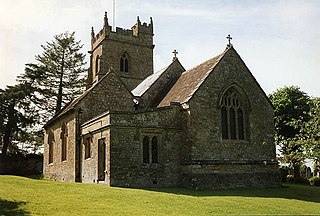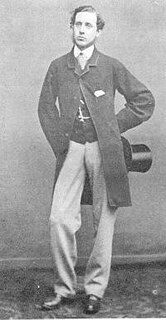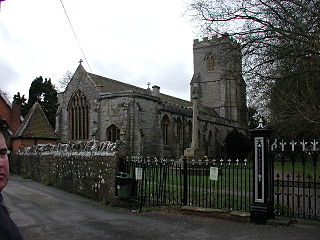
Keynsham is a town and civil parish located between Bristol and Bath in Somerset, England. It has a population of 16,000. It was listed in the Domesday Book as Cainesham, which is believed to mean the home of Saint Keyne.

Yatton is a village and civil parish within the unitary authority of North Somerset, which falls within the ceremonial county of Somerset, England. It is located 11 miles (18 km) south-west of Bristol. Its population in 2011 was 7,552. The parish includes Claverham, a small village which was originally a farming hamlet.

South Cadbury is a village in the civil parish of South Cadbury and Sutton Montis, in the South Somerset council area of the English county of Somerset. The parish includes the village of Sutton Montis.

Congresbury is a village and civil parish on the northwestern slopes of the Mendip Hills in North Somerset, England, which in 2011 had a population of 3,497. It lies on the A370 between Junction 21 of the M5 and Bristol Airport, 13 miles (21 km) south of Bristol city centre, and 7 miles (11 km) east of Weston-super-Mare. The Congresbury Yeo river flows through the village. The parish includes the hamlet of Brinsea.

Maperton is a village and civil parish in Somerset, England, situated 3 miles (4.8 km) south west of Wincanton in the South Somerset district. The village has a population of 140. However, this small number includes Elliscombe House care home which alone has an average of 40 residents.

Whichford is a village and civil parish in Warwickshire, England, about 5 miles (8 km) southeast of Shipston-on-Stour. The parish adjoins the county boundary with Oxfordshire and the village is about 4+1⁄2 miles (7 km) north of the Oxfordshire town of Chipping Norton.

Charles Eamer Kempe was a Victorian era designer and manufacturer of stained glass. His studios produced over 4,000 windows and also designs for altars and altar frontals, furniture and furnishings, lichgates and memorials that helped to define a later nineteenth-century Anglican style. The list of English cathedrals containing examples of his work includes: Chester, Gloucester, Hereford, Lichfield, Wells, Winchester and York. Kempe's networks of patrons and influence stretched from the Royal Family and the Church of England hierarchy to the literary and artistic beau monde.

Yarlington is a village and civil parish, near the source of the River Cam, in the English county of Somerset.

St Michael, Cornhill, is a medieval parish church in the City of London with pre-Norman Conquest parochial foundation. It lies in the ward of Cornhill. The medieval structure was lost in the Great Fire of London, and replaced by the present building, traditionally attributed to Sir Christopher Wren. The upper parts of the tower are by Nicholas Hawksmoor. The church was embellished by Sir George Gilbert Scott and Herbert Williams in the nineteenth century.

Sparkford is a village and civil parish in the South Somerset district of Somerset, England. The parish includes the village of Weston Bampfylde.

North Cadbury is a village and civil parish 5 miles (8 km) west of Wincanton, by the River Cam, in the South Somerset district of Somerset, England. It shares its parish council with nearby Yarlington and its civil parish includes the village of Galhampton, which got its name from the settlement of the rent-paying peasants, and the hamlet of Woolston.

The Somerset towers are a collection of distinctive, mostly spireless Gothic church towers in the county of Somerset in south west England.

The Grade I listed buildings in Somerset, England, demonstrate the history and diversity of its architecture. The ceremonial county of Somerset consists of a non-metropolitan county, administered by Somerset County Council, which is divided into five districts, and two unitary authorities. The districts of Somerset are West Somerset, South Somerset, Taunton Deane, Mendip and Sedgemoor. The two administratively independent unitary authorities, which were established on 1 April 1996 following the breakup of the county of Avon, are North Somerset and Bath and North East Somerset. These unitary authorities include areas that were once part of Somerset before the creation of Avon in 1974.

The Church of St Michael in Milverton, Somerset, England dates from the 13th century, on the site of an even earlier chapel, and has been designated as a Grade I listed building.

The Church of St Mary is the parish church of Cannington, Somerset, England. The parish is in the Church of England Diocese of Bath and Wells.

The Church of St Peter in Huntspill, Somerset, England was established by 1208, rebuilt around 1400, and extended in the early to mid 15th century. It was gutted by fire in 1878 and restored over the next two years. It has been designated as a Grade I listed building.

The Church of St Michael at Brent Knoll, Somerset, England dates from the 11th century but has undergone several extensions and renovations since then. It has been designated as a grade I listed building. There is a Norman doorway however the rest of the church dates from around 1290. The north aisle was built in the late 15th century.

North Cadbury Court in North Cadbury, Somerset, England is a country house built around 1580–1610, by Sir Francis Hastings. It has been designated as a Grade I listed building.

William de Botreaux, 3rd Baron Botreaux (1389–1462) was a prominent baron in Somerset and the south-west of England. He inherited from his father the barony by writ of Botreaux as well as substantial family landholdings which included a moiety of the feudal barony of North Cadbury, Somerset, in the parish church of which capital manor he was buried, as he requested in his will.

The Anglican Church of St Mary Major in Ilchester, Somerset, England was built in the 13th century. It is a Grade II* listed building.





















